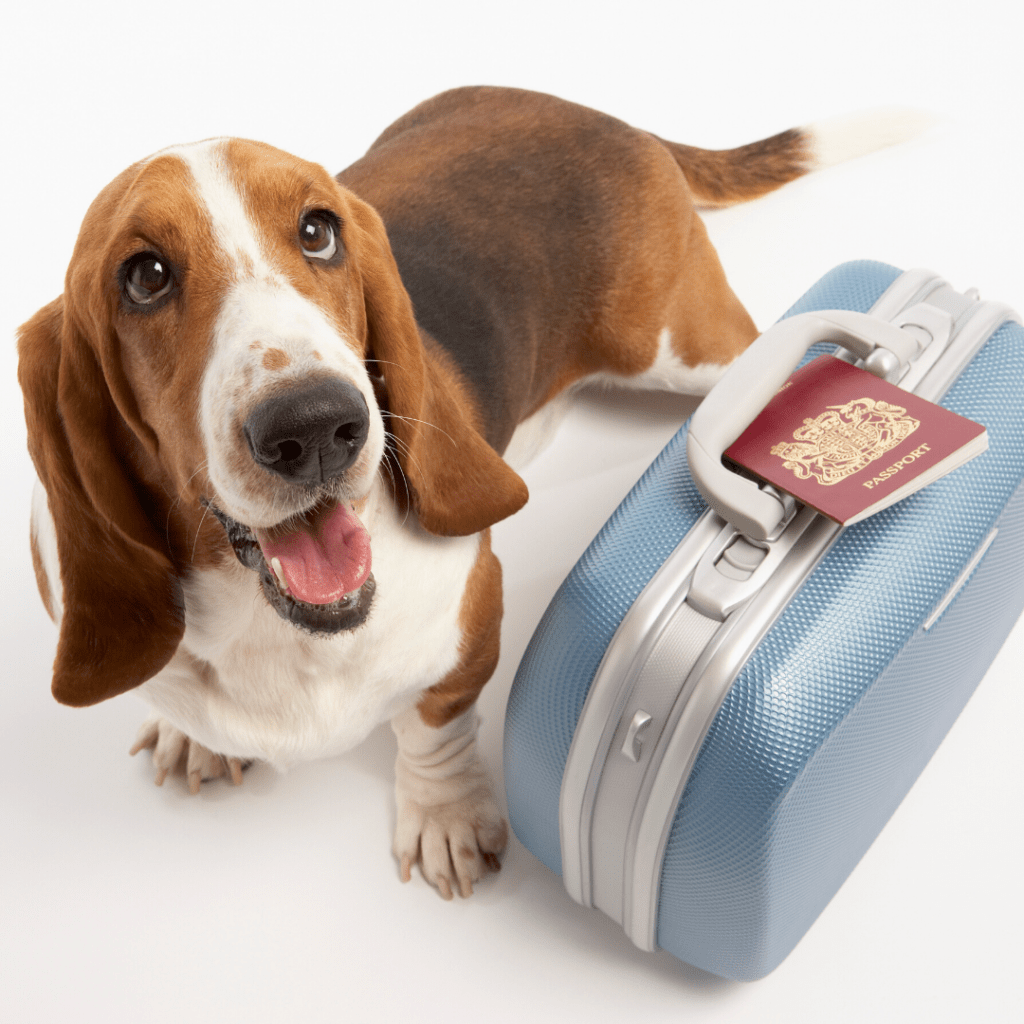
Traveling by plane with a dog and cat has never been a simple task, especially when traveling internationally. Lately, this reality is increasingly common and we see pets every day in airport departure areas around the world. According to data provided by LATAM and GOL, in Brazil in 2018, 48 and 18 thousand pets were shipped, respectively.
However, the more common a situation, the greater the number of tutors who neglect important details in the planning stage of the trip, which results in animals being prevented from boarding.
We will list here the 3 most common mistakes that owners make before the day of travel with their animals. These usually lead to missed flights and non-acceptance of the pet for flight.
Sanitary documentation for traveling by plane with dogs and cats
This is the most important part and it serves to verify any health status of our dog or cat for entry into any country in the world.
Let’s clarify that the documentation is not just the vaccination card up to date, or the certificate from the veterinarian with the correct date, or the International Veterinary Certificate (C.V.I) with the stamp of the Ministry of Agriculture and Livestock of Brazil (MAPA)
See here the Documentation required for each country.
Attention to details:
- Tutor’s name in a document must be the same in all of them
- You cannot present a vaccination card with the name of the animal written in a form and on the proof of microchip from another.
- They cannot have wrong dates or steps that are not within the correct deadlines.
- All documents submitted must be originals.
- All signatures if possible in blue color
- All veterinary reports with stamps, letterhead, full name of professionals.
- Other documents such as a report for emotional assistance animals or guide dogs, powers of attorney and/or forms must be valid and respecting all rules for filling out.
For travel by plane with dog and cat to international destinations, in general, we must present the following documents:
- Microchip certificate
- Up to date rabies vaccination record
- Rabies serology – for destinations in Europe and Japan
- Veterinary International Certificate for entry into another country.
However, it is not only on international flights that we should be concerned about being cautious. Deadlines and validity also exist for domestic travel with animals. So every detail is relevant. An up-to-date vaccination record, especially for rabies, and a certificate from the veterinarian with signature and stamp and validity of 10 days is required by national airlines.

Carrying box for dogs and cats traveling by plane
The transport box is a very complicated issue when traveling by plane with a dog and cat, mainly because we are hostage to the common sense of each employee, regarding the correct size and comfort of the animal at the time of boarding. Basic rules for you not to have an unwanted surprise at check in are:
- Your dog or cat should be able to stand up – without leaning their head against the ceiling
- Be able to turn around their body
- Not stay with any part out of the crate – no paws, no snout, no tail
- Must lie comfortably inside the crate
For boarding in the cabin, the animals cannot exceed the maximum weight allowed, and the material of the box can be malleable (fabric) or rigid (plastic). Specific marks for this type of transport are not required.
In general, the average size for the transport crates for animals traveling in the cabin are: 25 cm high, 40 cm long and 30 cm wide. Maximum weight 7 to 8 kilos.
For travel in the hold or in the cargo hold, only hard plastic, wooden or metal boxes that comply with IATA regulations are accepted ( International Air Transport Association), body that regulates air transport, whether of humans or animals. That is, not every brand and model sold on the market can be used in this situation.
Beware of the weight and size allowed by airlines, even if your dog goes in the hold. Transport box plus the dog cannot exceed 45 kilos.
Beware of the weight and size allowed by airlines, even if your dog goes in the hold. Transport box plus the dog cannot exceed 45 kilos.
Animals that exceed this limit must be transported as live cargo, and it is necessary to hire a customs broker for their release and a carrier that performs this service.
Animals that exceed this limit must be transported as live cargo, and it is necessary to hire a customs broker for their release and a carrier that performs this service.
Another important item is cleaning the transport box. It cannot, under any circumstances, be dirty or have a bad odor at the time of boarding.
Animal behavior at the airport
This is a very delicate topic, mainly because we depend on the conscience of everyone around us. For plane travel with a dog and cat, the behavior rule must be strict.
If our pets are meowing, barking, growling, or anyone else is uncomfortable with their presence on the plane, it could be a reason for a problem on your boarding. In extreme cases you may be asked to step off the plane and wait for the next possible flight.
But how to solve this behavioral problem? In many cases, treatment with a professional is the safest way to resolve. The trainer will know how to treat and visualize unwanted attitudes and teach dogs and even cats to “behave” correctly.
Animals that are adapted to places with a lot of movement behave better than those that do not have much contact with life in society. Take your pet for walks in shopping malls, crowded streets (such as Avenida Paulista in São Paulo, on Sunday), take small walks inside the transport box even if it is by car and teach the animal to changes in the environment (mainly for cats) should be a routine for anyone traveling with their 4-legged companion.
Another relevant point is the adaptation that the pet has with the transport box. Regardless of whether in the cabin or in the hold, this adaptation is essential for the pet to have a smooth trip and not behave inappropriately, avoiding barking, meowing, stress, fear and anxiety. Travel safety is completely related to how adapted the dog or cat is to that environment.
This box should be presented to the traveler well in advance of the actual day of travel. Place it in strategic places in your house, transform it into a dog house or cat’s bed, place attractions (toys, food) inside to encourage the animal’s entry, as well as place the tutor’s clothing and always encourage him. with positive responses are effective ways of adapting.
-

Airplane trip with cat in cabin -

Airplane trip with dog in cabin
BONUS TIP – Planning a plane trip with pets
Planning is essential for air travel with dogs and cats. As well as the lack of it, it will be the reason for many problems, including the impediment of their boarding.
Common mistakes happen daily, but they can always be avoided “easily”.
Wrong in some detail of your pet’s trip will cause:
- Unnecessary expenses with cancellation and “buyback” expenses of airline tickets
- Lost time. For example, a shipment that was scheduled for 1 week may be delayed by up to 5 months, depending on the destination chosen (and the size of the error)
- Sleepless nights. By not being able to talk directly with the airlines, not receiving reliable information and never being sure that you are on the right path.
So, better than cure is prevention. Prevent yourself with correct dates, with reliable information, with qualified professionals, with double conferences.





You must be logged in to post a comment.